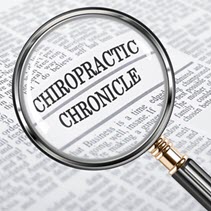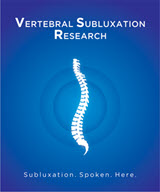How Chiropractic Care Can Help Alleviate Motor Tics
.jpg)
Motor tics, which are sudden, repetitive movements or vocalizations, can range from mildly annoying to severely disruptive. They are often associated with conditions like Tourette’s syndrome, though they can appear in individuals without any specific neurological diagnosis. These tics can include anything from blinking or grimacing to more complex motor patterns or vocal outbursts. For those affected, motor tics can be not only physically exhausting but also emotionally challenging, especially when they interfere with daily life or attract unwanted attention.
Traditional approaches to managing motor tics often involve medications designed to suppress the symptoms, but many patients and their families seek out more holistic, natural approaches that address underlying issues rather than simply masking the problem. Chiropractic care, with its focus on the spine and nervous system, is an alternative that has shown promise in reducing the severity and frequency of motor tics by helping the nervous system function more effectively.
The Role of the Nervous System in Motor Tics
To understand how chiropractic care can influence motor tics, it’s essential to first grasp the central role of the nervous system in the body. The nervous system controls and coordinates all functions of the body, from breathing and heart rate to muscle movement and reflexes. It is the master communication system, relaying signals between the brain and the rest of the body through the spinal cord and an intricate network of nerves.
Motor tics are thought to originate from disruptions in the brain's ability to regulate and control motor functions. In some cases, this may involve abnormalities in the basal ganglia—a group of structures deep in the brain responsible for regulating movement. These disruptions cause involuntary contractions of muscles, leading to the sudden, uncontrollable movements we recognize as tics.
But what if these disruptions are not solely a matter of brain chemistry? Increasingly, research is exploring the possibility that nerve interference along the spinal column can also play a significant role in the onset or exacerbation of motor tics. This is where chiropractic care comes into the picture.
Chiropractic and the Nervous System: The Importance of Spinal Health
The spine plays a crucial role in protecting the spinal cord, which serves as the main pathway for communication between the brain and the body. However, structural shifts in the spine can occur, obstructing the nerves and interfering with their ability to function properly. These shifts, known as vertebral subluxations, may occur due to a variety of factors, including poor posture, trauma, stress, or even the process of birth. When subluxations are present, they disrupt the flow of nerve signals, potentially contributing to a variety of symptoms—including motor tics.
Chiropractors specialize in detecting and correcting these vertebral subluxations through specific adjustments to the spine. By removing these structural shifts, chiropractic care improves nerve supply and function, allowing the nervous system to communicate more effectively with the rest of the body. When nerve interference is minimized, the body has a greater capacity to regulate itself and heal from within.
Chiropractic care focuses on supporting the body's natural ability to function optimally, rather than simply treating symptoms. In the case of motor tics, chiropractic adjustments aim to remove the interference in the nervous system that may be contributing to the abnormal muscle contractions causing the tics. When nerve signals flow freely, the nervous system can more effectively manage and control motor functions.
Chiropractic Care and Motor Tics: What the Research Says
One of the key pieces of research supporting the potential role of chiropractic care in managing motor tics is a case series by Drs. Jason C. Ledford and Matthew F. Wink, published in the Annals of Vertebral Subluxation Research. Their study examined the effects of full spine chiropractic care on two male patients—one a 7-year-old child and the other a 27-year-old adult—both of whom were suffering from motor tics.
The results were promising. After just a few chiropractic adjustments, both patients experienced a reduction in the frequency and severity of their tics. The 7-year-old, who had been dealing with motor tics for two weeks, saw a significant improvement after his first two visits, with the tics disappearing entirely for a month following his third visit. The 27-year-old, who had been living with daily motor tics for over a decade, noticed a reduction in his symptoms after the initial treatment and eventually was able to go a full month without any tics after two months of chiropractic care.
This study is a clear example of how chiropractic adjustments, specifically targeting spinal subluxations, can have a positive impact on nervous system function, potentially reducing the symptoms of motor tics. While more research is needed to fully understand the relationship between specific spinal misalignments and tic disorders, the findings provide hope for those seeking a non-invasive, drug-free option for co-managing patients with motor tics.
Chiropractic Care: A Holistic Approach to Health
It’s essential to emphasize that chiropractic care does not treat motor tics directly, nor is it a cure for neurological conditions like Tourette’s syndrome. Chiropractic care is based on the principle of restoring proper nervous system function by addressing the structural misalignments in the spine that may be contributing to nerve interference. In doing so, chiropractic care helps the body function more efficiently, allowing it to heal and regulate itself more effectively.
This approach can be beneficial for a wide variety of health concerns beyond motor tics. Many people, for instance, see a chiropractor for conditions like back pain, headaches, or neck pain, but experience additional benefits such as improved sleep, better digestion, or enhanced immune function. This is because the nervous system governs so many aspects of our health, and when spinal misalignments are corrected, the whole body can perform better.
Chiropractic is not about treating specific conditions like tonsillitis, asthma, or even motor tics. Instead, it focuses on the location and reduction of vertebral subluxations, which are obstructions that interfere with normal nerve flow. By correcting these obstructions, chiropractic allows the nervous system to function as intended, giving the body a better chance to heal and self-regulate.
What to Expect from Chiropractic Care for Motor Tics
If you or someone you know is dealing with motor tics and considering chiropractic care, it’s important to consult with a licensed chiropractor who has experience in treating patients with neurological issues. A chiropractor will perform a thorough evaluation to determine if vertebral subluxations are present and whether they may be contributing to the motor tics.
Chiropractic care is individualized, meaning that the frequency and type of adjustments will vary depending on the patient’s needs. For some, improvements may be seen after just a few visits, while others may require more ongoing care to maintain optimal results. It’s also essential to note that chiropractic care is most effective when patients are consistent and follow the recommended treatment plan, which may include not only adjustments but also lifestyle changes such as posture correction, stress management, and exercises to support spinal health.
The Future of Chiropractic and Motor Tic Management
While more research is needed to fully understand the complex relationship between the spine, nervous system, and motor tics, the evidence so far suggests that chiropractic care holds great potential for helping patients manage these symptoms. By addressing the underlying causes of nerve interference, chiropractic offers a holistic, non-invasive option for those seeking relief from the challenges of motor tics.
If you or someone you love is struggling with motor tics, chiropractic care may be a valuable part of a comprehensive approach to managing symptoms and improving quality of life. Through careful adjustments, chiropractors can help ensure that the nervous system is functioning at its best, allowing the body to regulate and heal itself naturally.
Matthew McCoy, DC, MPH
Annals of Vertebral Subluxation Research
Website: [www.vertebralsubluxationresearch.com]
Email: drmatthewmccoy@gmail.com
Phone: 404.247.2550

Research News
- The 19th International Research and Philosophy Symposium (IRAPS): Bridging Philosophy, Science, and Practice in Chiropractic
- New Study Uncovers the Broad Systemic Benefits of Chiropractic Care on Nervous, Endocrine, and Immune Systems
- The Hidden Power of the Spine: How Vertebral Subluxation Impacts Health Through Systems Biology
- New Study Sheds Light on Vertebral Subluxation and Systems Biology
- Understanding Cervical Spine Movement and Motor Vehicle Accidents













